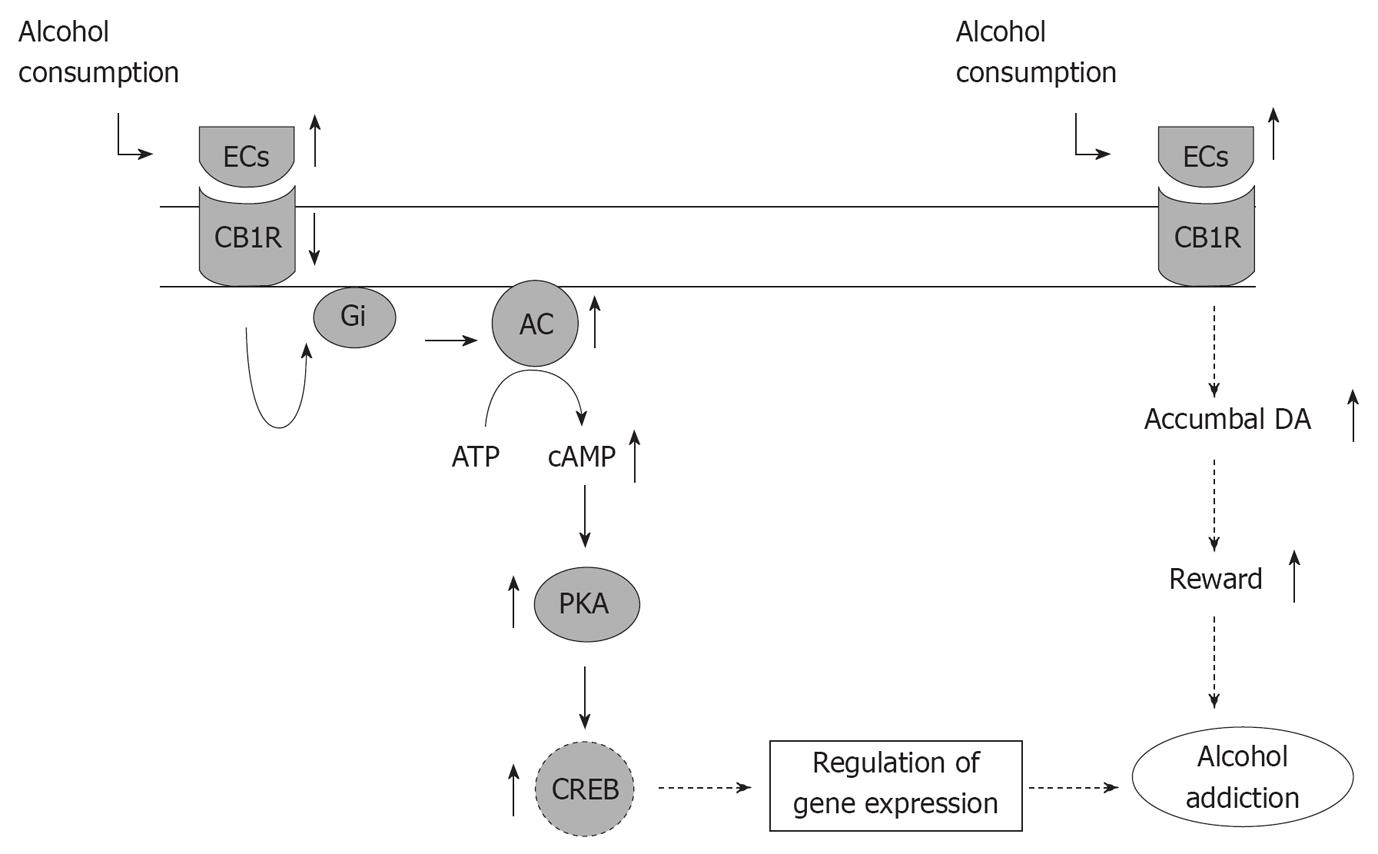Copyright
©2012 Baishideng.
Figure 2 Possible mechanism of alcohol addiction involving the endocannabinoids system.
Alcohol exposure has been shown to elevate endocannabinoids (eCBs). Repeated alcohol admistration downregulates the CB1 receptors as a neuroadaptation to elevation in the eCBs. This could lead to tolerance to alcohol. The desensitization of CB1 receptor-mediated G-protein coupling may reduce the inhibition of adenylate cyclase (AC) activity as CB1 receptors are negatively coupled to AC leading to increase in the CREB mediated gene expression. Modulation of other neurotransmitter systems by eCB system during alcohol exposure might also be associated with alcohol addiction. The mesocorticolimbic dopamine (DA) system represents a common neuronal substrate for reinforcing properties of drugs of abuse including alcohol. Chronic alcohol exposure-induced increase in AEA content appears to activate mesolimbic dopaminergic transmission by increasing the DA release in the shell of NAc. The functional interaction of the eCB system with DA system in reward-related brain regions might be associated with one of the underlying mechanisms of alcohol addiction. This figure is modified from our publication[3].
- Citation: Hungund BL, Vinod KY. Endocannabinoid system: A newer molecular target for the treatment of alcohol-related behaviors. World J Pharmacol 2012; 1(3): 44-49
- URL: https://www.wjgnet.com/2220-3192/full/v1/i3/44.htm
- DOI: https://dx.doi.org/10.5497/wjp.v1.i3.44









